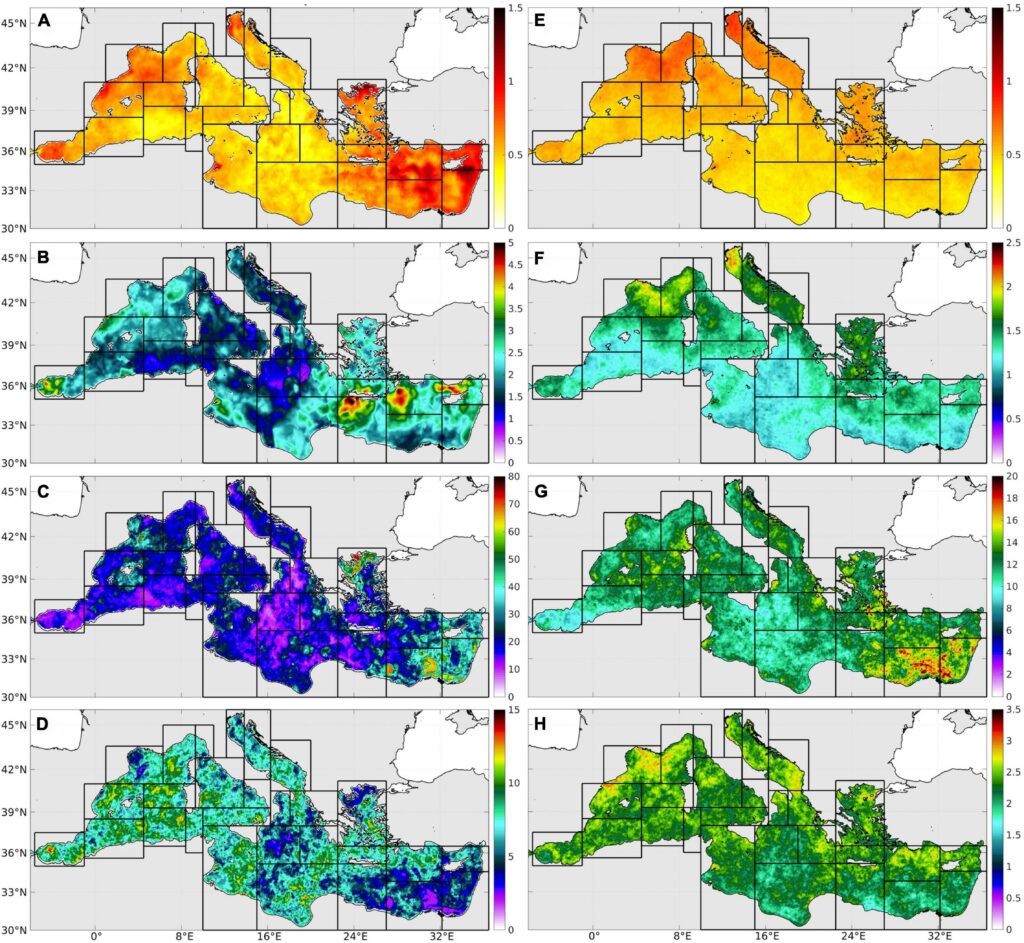A new study published in Frontiers in Marine Science provides a comprehensively analysis of Marine Heat Waves (MHWs) in the Mediterranean Sea at sub-regional scale from surface to sub-surface and from open ocean to coastal near-shore waters, using remote sensing and multi-platform in situ observations. The results show that “in the whole Mediterranean Sea, MHWs are increasing substantially in intensity, duration and frequency, with strong spatial variability highlighting the sub-regional response to global warming. All sub-regions are experiencing positive trends of all MHW characteristics with unprecedented intensification in recent years.” The authors warn that “better understanding the ocean behavior in response to extreme events, improving their prediction, fostering their monitoring and facilitating access to ocean information from local to sub-regional scales will help to implement adaptive management, to establish adaptation strategy and to support the marine conservation and sustainable management of the oceans in a warming world.“
Abstract: Society is facing climate-related challenges and impacts, such as marine heat wave (MHW) events that adversely affect ecosystems, threaten economies and strengthen storms by warming ocean waters. MHWs are substantially increasing in intensity, duration and frequency worldwide, particularly in the Mediterranean Sea, which responds rapidly to climate change. This study proposes a comprehensive analysis of MHWs in the different sub-regions of the Mediterranean, where the strong spatial variability requires focused attention, from surface to sub-surface and from open to coastal oceans. At surface, the MHW indices have dramatically increased over the last four decades from 1982 to 2020, with an unprecedented acceleration rate in recent years in all sub-regions. Besides the sub-regional features of surface MHWs, the propagation of such events into the ocean interior is also examined highlighting sub-regional and seasonal variability in the sub-surface ocean response. The resulting upper-ocean density stratification to these extreme events is enhanced in all sub-regions which would increase the degree of decoupling between surface and deep oceans causing changes in water masses and marine life. Finally, extremely warm events in coastal waters are also addressed through a case study in the Balearic Islands showing their higher intensity and occurrence in near-shore environment as well as the different response from surface to sub-surface that strongly depends on local features. In addition to this study, the Balearic Islands Coastal Observing and Forecasting System (SOCIB) has implemented a smart platform to monitor, visualize and share timely information on sub-regional MHWs, from event detection in real-time to long-term variations in response to global warming, to diverse stakeholders. Society-aligned ocean information at sub-regional scale will support the policy decision-making and the implementation of specific actions at local, national and regional scales, and thus contribute to respond to societal and worldwide environmental challenges.

Journal reference: Juza M, Fernández-Mora À and Tintoré J (2022) Sub-Regional Marine Heat Waves in the Mediterranean Sea From Observations: Long-Term Surface Changes, Sub-Surface and Coastal Responses. Front. Mar. Sci. 9:785771. doi: 10.3389/fmars.2022.785771
